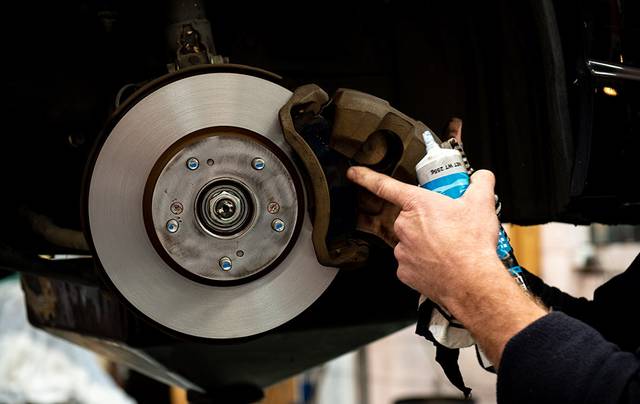Rear shudder when braking repair from $138
Get quotes from independent specialists near you.

Australia's #1 booking site for car services & car repairs
Book now, pay later Interest-free payments
Transparent prices no surprises

*Available at select service providers. T&Cs apply.
Average rating for Rear shudder when braking repair
5.0 • based on 6 reviews of 6 businesses
Rear shudder when braking repair
Rear shudder when braking repair cost
What is brake shudder? It manifests as a feeling of vibration through the steering wheel when braking. If you haven’t felt it, imagine the sensation you might feel if you drove over corrugated iron as you are braking.
This vibration is more obvious when there is an issue with the front brakes. This is because your hands are always on the steering wheel which is itself connected to the front suspension. When there is rear brake shudder it will still feel like a grab-and-release type of vibration, but it will be coming from the rear of the vehicle and you will feel the pulsating sensation through the brake pedal.
The common culprit for rear brake shudder is uneven brake rotors (brake discs). This would only occur in vehicles with rotors all round as drum brakes don’t utilise rotors.
After you have had the brakes inspected by an AutoGuru brake expert and discover the rotors need to be replaced, the subsequent job can cost you around $167 to $594. This includes replacing a pair of rear rotors and brake pads. Price does depend on the make and model of the vehicle.
What is rear brake shudder
The experts have a name for uneven brake wear - disc thickness variation (DTV). When the brake caliper forces the brake pads against an uneven rotor, it creates variation in the brake torque. As there are higher and lower sections on a rotor affected with DTV, the brakes will grab and release, producing the pulsating that is felt through the brake pedal.
DTV can start to occur from the time new pads are fitted to a vehicle. If brake bedding-in processes aren’t adopted it can create uneven wear on the rotor. It also can occur when the rotors are installed incorrectly. If for any reason the rotor is not flush with the surface it rests on, it will cause uneven rotation on the axis.
Another cause of DTV can be from the brake calipers. A brake caliper could be faulty, causing it to press the brake pad against the rotor when the brakes aren’t applied. This can cause uneven wear which is also good reason why you should never casually rest your foot on the brake pedal whilst driving.
In some cases, the uneven wear can be caused by, or can also cause, rotor runout. Rotor runout is when the brake rotor is off centre or has a wobble and is rotating off-axis. A faulty wheel bearing, buildup on the wheel hub/rotor hat - creating an uneven surface for the brake disc to sit on - or badly tightened wheel lugs can cause rotor runout.
When your car has DVT, the brake rotors will need to be replaced or machined. Machining is the process of removing a layer of the brake rotor to create a smooth surface. Brake rotors have a minimum required thickness and not all will be able to be machined to alleviate DTV symptoms.
When repairing a rear brake shudder it may require more than just replacing or machining the faulty brake rotor/s. Make sure any underlying source of the DTV is found and fixed otherwise the same problem will continue to arise.
Symptoms that the rear brake rotors (discs) need replacing or machining
- Shudder that’s coming from the rear of the car when braking
- Pulsating feeling through brake pedal on braking
- Uneven brake rotors

How are the rear brake rotors (discs) replaced or machined
- Remove rear wheels
- Remove the brake caliper from the brake rotor
- Remove brake pads from the caliper
- Remove the brake rotor
- Machine the brake rotor (if machining and not replacing)
- Clean wheel hub or rotor hat
- Fit machined or new brake rotors
- Refit new brake pads
- Refit brake caliper
- Refit rear wheels
- Bleed brakes if required and test function
Tips to remember
Use a torque wrench when tightening wheel lugs. This will ensure even torque is applied to prevent rotor run out.
Take the time to bed in new brakes. If the brakes are not properly bedded in they can be subjected to thermal shock which can create uneven wear.
Make sure to clean the wheel hub of any buildup to create an even surface for the rotor to butt against.
It’s advised to fit new brake pads whenever brake rotors are replaced or machined.
How important is replacing or machining the rear brake rotors (discs)?
Brakes in good working order are an essential safety feature. Faulty brakes represent a danger to you and other road users and can, obviously, lead to very serious accidents - something you are sure to want to avoid.